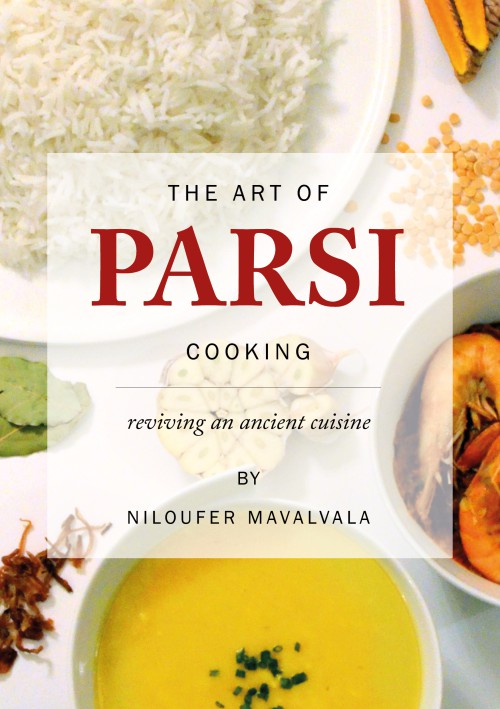
*Available directly from our distributors, click the Available On tab below
Born and raised in Karachi, Pakistan, Niloufer’s love for food
combined with extensive world travel from a young age inspired
her to experiment with world cuisines. Niloufer gave her first
cooking class to a group of school girls at the age of 17; loving the
opportunity to meet new people who share her passion for food,
she has gone on to give many, many more cooking classes in Dubai,
UK, and Canada – where she has lived for the past 15 years with
her family.
In 2013, Niloufer decided to start a recipe blog Niloufer’s Kitchen
where she loves to share old and new culinary creations to
a following of 750,000 from around the world. Author of 10
e-cookbooks, she also writes for the Huffington Post, assorted
magazines and journals from around the world.
You can visit her blog at www.NiloufersKitchen.com, and
follow her on Twitter @NiloufersKtchn and
on Facebook at www.facebook.com/NiloufersKitchen.
The Art of Parsi Cooking originally appealed to me because a close friend of mine is Persian, and I assumed ‘Parsi’ (like the Persian language, ‘Farsi’) cuisine was equivalent to the mouth-watering fare I enjoy whenever I eat at her place. While the term ‘Parsi’ does mean ‘Persian’, the author is quick to explain that the Parsi community is actually a Persian diaspora living in India for generations. As a result, the recipes that fill the book are a tantalising blend of Persian and Indian flavours.
Mavalvala’s love for her culture and family are evident throughout, and the book begins with a lengthy dedication to her parents and a history of her favourite cuisine. Each recipe is annotated with references to its cultural and familial context, and several recipes are identified as Mavalvala’s own mother’s or passed down by her mother-in-law.
Overall, I was glad I tried it and would recommend it to anyone else seeking to expand their cooking repertoire.
The Art of Parsi Cooking is a simply designed but exciting cookbook that’s full of great recipes which are both easy to follow and exciting. I am half Iranian but have shamefully never tried to properly learn how to cook their amazing food, and with this book being a blend of Iranian and Indian dishes, I knew I wanted to give this a go.
The ingredients aren’t always the easiest to find in your average supermarket, but it’s a Parsi cookbook so I don’t expect them to be! I found a lot of the items easily in local Asian stores and felt that the recipes range in difficulty, but a lot of them are fairly simple to follow. The tips at the end, giving extra insight into how to refine a dish and why are also great. There are some recipes I haven’t tried before, and some I have had with my Iranian family- and others I sort of recognise but with a bit of a twist, which is always interesting! So far I’ve tried out a few appetisers and main dishes, but no desserts yet – though they look delicious as well!
The book itself isn’t the most polished in terms of design and photography, but it has a sort of homegrown feel, which somehow made me have more trust in the recipes – it felt like the author really knew what she was talking about.
The Art of Parsi Cooking is a great choice for anyone wanting to learn more about Persian and Indian cooking, with some key recipes to impress anyone at your next dinner party!
With the exception of About the Author and the Dedication, the 109 pages of this altogether tantalising publication offer the taste buds a resounding nuance of gourmet difference.
Broken into eight distinct sections: Appetizers (Pehli Vani), Side Dish (Beeji Vani), Main Dish (Teeji Vani), Rice Dishes (Chawal Nu Bhonu), Rotli Dishes (Rotli Nu Bhonu), Desserts (Mithoo Monu), Tea Time Snacks (Chai Ni Satheh) and Sparsi Cook’s Spice Island, The Art of Parsi Cooking – Reviving an Ancient Cuisine is an eye-opener with regards the surprisingly differing textures that go into Parsi cooking.
For instance, Dhansak (Meat cooked with lentils and rice) on page 54, consists of not only Toor/tuar lentils, but also red masoor lentils, which goes some way in underlining the subtle variations within the cooking of said meal: "There is no right or wrong to cooking Dhansak, and each family has its own ingredients and methods for this historic dish. Love of Dhansak just seems to endorse one’s ‘Parsi-pannu’ or ‘Parsi-ness’. Serve this with a chilled beer or shandy for the ultimate Parsi eating experience.’’
Conveniently laid out and displayed along with a fine repertoire of colour photographs to both invite and invigorate ones’ hungry belly, this conveniently sized cookbook is a more than tempting literary addition to the kitchen.
As Denise Landis, publisher and editor in chief of The Cook’s Cook has since written: "The Art of Parsi Cooking fills a gap in the world of cookbooks.’’
But hey, don’t just take our word for it because if you’re into rustling up something different do endeavour to investigate further…
We use cookies on this site to enhance your user experience and for marketing purposes.
By clicking any link on this page you are giving your consent for us to set cookies